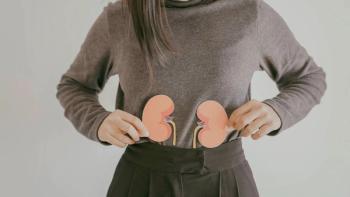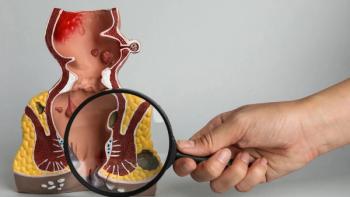
Cancer Survivors Anonymous: Cancer Is Always at Your Doorstep, Much Like Alcoholism
A pancreatic cancer survivor makes a comparison between alcoholism and being a cancer survivor.
Back in 1935, Bill Wilson met Dr. Bob Smith. At the time, both were coming out from under the cruel grip of alcohol. Realizing alcohol addiction was an illness rather than a moral failure, they wrote a paper, “Alcoholics Anonymous: The Story of How More Than One Hundred Men Have Recovered from Alcoholism,” which led to the founding of Alcoholics Anonymous or widely known today as AA. Now a global organization, it has thousands of chapters worldwide that meet weekly in community centers or church basements, or wherever they can round up a few folding chairs and plug in a coffee pot. A disorganized organization so to speak, from their Fact File, AA “is not organized in the formal or political sense.” More self-guided than not, “There are no governing officers, no rules or regulations, no fees or dues.”
Often heard at their meetings is, “Hi! I’m *name*. I’m an alcoholic.” Even though the person may have been sober for decades, there is an acute awareness their alcoholism is always at their doorstep and stands ready to take over their lives once again. Such is cancer.
Although I remain as they say in cancer groups, NED or “No Evidence of Disease,” I am all too aware I am only one scan away from being dropped back into the cancer blender. Perhaps another horrific surgery to extract a new tumor – if it can be extracted or resected – as my doctors like to say. Or maybe another round of chemo and radiation to shrink it so it can be removed. Then more radiation to try to zap the remaining cancer cells from where it was taken out. Or worse, it is stage 4, meaning the web of cancer has spread throughout my body. Thus, not to be grim, I like to say, “Hi, I’m Bill. I have cancer.”
What is the point of this perspective? For some, it might sound pessimistic or worse, ghoulish, but the reality of cancer is we are never out from under its menace. Yes, maintaining an optimistic attitude is the 101 of beating cancer, but our optimism must be rooted in reality. For me, a way to do this is to be informed. I read non-stop about emerging cancer treatments. I have found even the bleakest news has the upside in that it could be worse. Thus, finding out I had pancreatic cancer and have survived it so far made me realize I had better get on with living, because we only have the life we have. To this day I am thankful to remain cancer-free after eight years where few see two years, and most don’t see five. With this in mind, I had better get on with living.
One of the hard parts of my journey has been getting my doctors to be frank with me about my long-term survival prospects. How does one plan their future if you don’t understand what you’re up against? For the most part, my doctors sidestepped my question about survival, thinking they didn’t want to deliver less than happy news to me. Frustrated with their non-answers like, “No one really knows the course of your cancer. All patients are different,” I snapped.
Having enough, I pinned down my primary care doctor who I’d seen for the right part of two decades. During a routine visit, I looked him in the eyes and asked, “I know this is a tough question, but what kind of prognosis (likely course of a disease) do I have?” Understanding he could not dodge my question, he told me, “If you’ve done your bucket list, Bill, do it over again.” Based on my extensive reading about pancreatic cancer, this is what I had thought – but I kept hoping I was wrong. I found his simple piece of advice freeing. No matter the type of cancer, I think his sage advice applies to all of us. We need to live the best we can and let our cancer do what it may do.
I should also say it was this same doctor when I turned yellow who unflinchingly ordered an emergency CT scan that showed I had a blocked bile duct, which led to a trip to the ER likely saving my life.
Sadly, I have read stories of countless other people where their doctor told them, “Oh, it’s just indigestion, give it some time, it will settle out.” This only to find out later their pancreatic cancer had advanced to stage 3 or 4 and was no longer treatable. I was fortunate to only be stage 2. But I have read turning yellow more often than not means someone’s pancreatic cancer has advanced to the point it may not be treatable.
In all this, I’ve come to learn how to live under the shadow of pancreatic cancer. A personal hero of mine is Justice Ruth Bader Ginsberg. Although I had little in common with her and didn’t agree with many of her rulings, I held her in deep reverence in that she faced five bouts with cancer dating back to 1999 when she initially dealt with colon cancer. Then in 2009, she faced her first bout with pancreatic cancer. Fortunately, it was caught early so she survived this brush with death. In November 2018 news surfaced she was facing lung cancer, found during a routine scan after she fell in her office fracturing three ribs. Then in August 2019, her pancreatic cancer came back. Chemo held it at bay. After being declared cancer-free in January 2020, in February it surfaced she was now facing liver cancer. Like most, I held my breath. Sadly, later that year near sunset on Friday, September 18th, surrounded by her family, she died. Within half an hour the tsunami of her death swept over the Internet. The “New York Times” headline read, “Ruth Bader Ginsburg, Supreme Court’s Feminist Icon, Is Dead at 87.” Similarly, “The Wall Street Journal” reported, “Ruth Bader Ginsburg, a Pioneering Justice on the Supreme Court, Dies at 87.”
I don’t know, but I believe she came to terms with the course of her cancer and continued to work as hard as she could to right wrongs in cases before the Supreme Court. Again, this is my impression based on my study of her impressive life. I think it can be said she lived every breath of her life to its fullest.
“Hi! I’m Bill. I have cancer.”
For more news on cancer updates, research and education, don’t forget to




